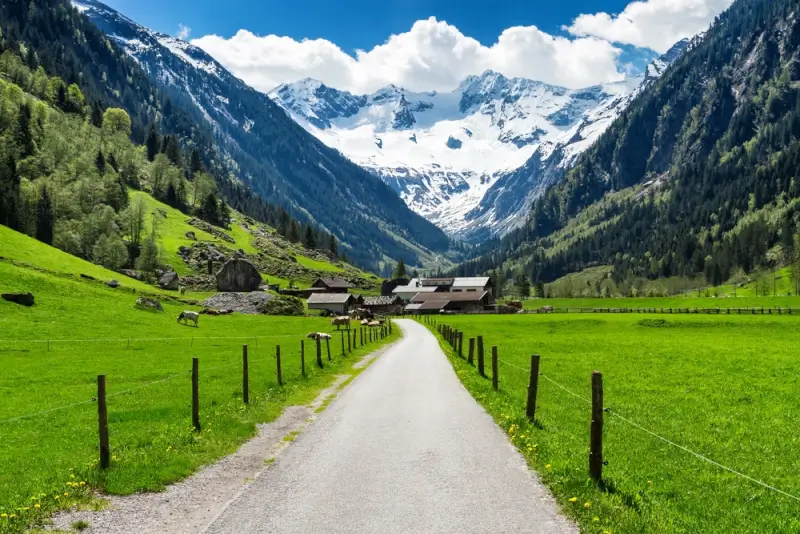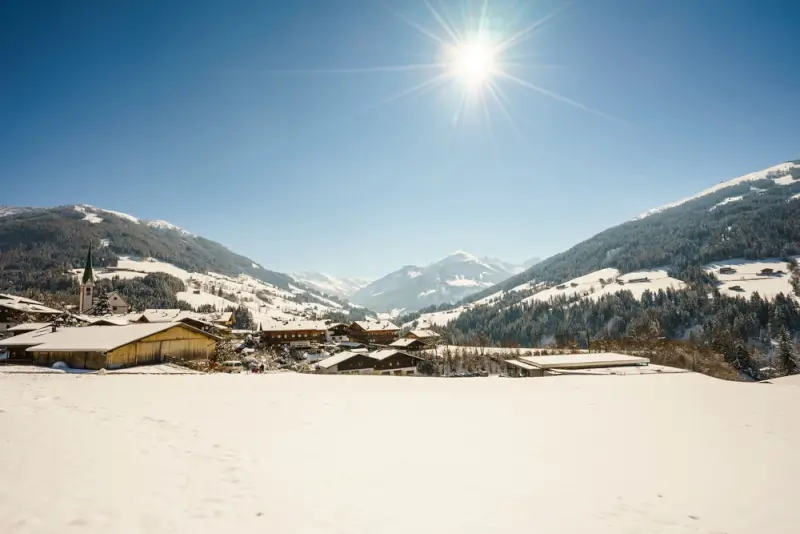The Austrian Alps are more than just a playground for skiers and hikers — they are home to some of the most charming villages in Europe.
Beyond the famous resorts and well-trodden paths lies a world where time moves differently, where centuries-old traditions shape daily life, and where the mountains themselves seem to whisper stories of generations past.
These villages in Austria represent something increasingly rare in our fast-paced world: authentic places where community matters more than commerce and where visitors are welcomed not as tourists, but as temporary neighbors.
Here, wooden shutters frame windows that have watched countless sunrises paint the peaks in shades of pink and gold, while church bells mark not just the hours but the rhythm of alpine life itself.
What follows is a journey through seven extraordinary destinations, each offering its own character and charm.
From villages perched high in glacial valleys to those nestled in sun-drenched plateaus, these are the places where Austria's alpine heart beats strongest.
7 Hidden Austrian Alps Villages to Explore

Away from the busy slopes and tourist-packed cities lie small communities where traditions remain alive, wooden chalets line quiet streets, and the surrounding mountains set the rhythm of life.
These villages offer travelers a slower pace, fresh alpine air, and a glimpse of the Austria that locals cherish.
1. Alpbach

Often called the most beautiful village in Austria, Alpbach lives up to its reputation with its uniform wooden chalets, flower-filled balconies, and stunning valley views.
It is a place where architecture has been carefully preserved, creating a sense of harmony that feels timeless.
Alpbach is not just picturesque, it is also a hub for hiking in summer and skiing in winter. Visitors can spend the day exploring mountain trails before relaxing in a traditional Gasthof with hearty Tyrolean cuisine.
2. Seefeld

Seefeld combines alpine charm with a lively atmosphere, making it ideal for those who want a blend of nature and culture.
Its sunny plateau location means breathtaking panoramic views, and its pedestrian-friendly center is perfect for leisurely strolls.
Known for hosting Winter Olympics events, Seefeld is a top choice for cross-country skiing, but in warmer months it becomes a hiking and biking paradise.
It is also one of the best starting points for travelers looking to experience scenic bike tours in Austria, with routes that wind through valleys and offer spectacular mountain backdrops.
3. Maria Alm

Tucked away in the Hochkönig region, Maria Alm is a village where church spires rise above meadows and mountain peaks tower on all sides.
This is a destination for those who love alpine traditions, as it is home to festivals that celebrate local music, crafts, and cuisine.
In winter, Maria Alm is part of a vast ski area, while summer brings hikers and mountain bikers eager to explore the trails.
It is a village that feels deeply connected to its surroundings and rewards those who stay for more than just a quick visit.
4. Filzmoos

Filzmoos is a true hidden gem, located near the Dachstein mountains but far from the crowds.
Known for its hospitality and family-run accommodations, it has a welcoming, small-town feel. The village is a popular spot for ballooning events in winter, when dozens of colorful hot-air balloons rise into the crisp sky, creating a spectacular sight against the snowy peaks.
In summer, its walking paths lead through forests and pastures, offering a peaceful experience that feels a world away from busier resorts.
5. Heiligenblut

At the foot of the Grossglockner, Austria’s highest mountain, lies Heiligenblut, a village that looks like a painting come to life.
Its pointed church tower is one of the most photographed sights in the country, framed by the dramatic backdrop of glaciers and rugged peaks.
This is the starting point for the scenic Grossglockner High Alpine Road, one of Europe’s most spectacular drives.
Heiligenblut is a perfect base for hiking, wildlife spotting, and simply enjoying the awe-inspiring beauty of the Hohe Tauern National Park.
6. Galtür

For those seeking a quieter alternative to the famous ski town of Ischgl, Galtür is a serene choice.
It sits at the far end of the Paznaun Valley and offers a more laid-back experience without sacrificing access to world-class skiing and hiking.
The village is family-friendly, with a focus on wellness and fresh mountain air. Its altitude means reliable snow in winter, and in summer, the meadows explode with wildflowers.
Galtür has managed to keep its charm intact, making it a great escape for travelers who want a peaceful alpine holiday.
7. Vent

High in the Ötztal Alps, Vent is a small mountain village that feels remote and wild.
It is famous among mountaineers as a starting point for glacier treks and high alpine routes, but it is also a wonderful place for casual hikers who simply want to experience unspoiled landscapes.
Life here revolves around the mountains, and visitors will find themselves surrounded by silence, broken only by the sound of cowbells in summer or crunching snow underfoot in winter.
When to Visit the Hidden Villages
Each of these villages offers something different depending on the season.
Winter is perfect for skiing, snowshoeing, and enjoying the cozy alpine atmosphere, while summer is ideal for hiking, cycling, and soaking up the lush green scenery.
Autumn is a particularly rewarding time to visit, as the crowds thin and the mountains are bathed in golden light, creating a calm, reflective mood.
Getting Around the Austrian Alps

Exploring these villages is easiest by car, as many are tucked into valleys or perched high in the mountains with limited public transport.
However, Austria’s roads are well maintained and incredibly scenic, turning every drive into part of the adventure. Travelers who prefer not to drive can still reach many of these destinations by train and bus, though the journey may require some planning.
Conclusion
The villages in Austria's Alps offer something that cannot be manufactured or replicated — the genuine experience of mountain life as it has been lived for centuries.
From Alpbach's picture-perfect chalets to Vent's wild remoteness, each destination rewards travelers with memories that linger long after the journey home.
These hidden gems prove that the best travel experiences often lie beyond the guidebook favorites and crowded attractions.
Whether you seek the cultural richness of Maria Alm's festivals, the adventure of Heiligenblut's high alpine roads, or simply the peace of Filzmoos's meadow walks, these villages deliver authentic encounters with Austria's alpine soul.
In a world where authenticity is increasingly precious, these mountain communities stand as testaments to enduring traditions and natural beauty. They invite travelers not just to visit, but to pause, breathe deeply, and reconnect with the simple pleasures that make life meaningful.


Disclaimer:
This post may contain affiliate links. I receive a small commission at no cost to you when you make a purchase using my link.








